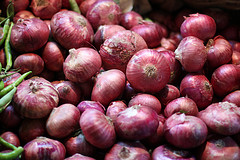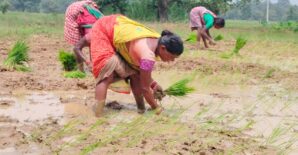As a staple food in India, onions are relied upon by the wealthy, the poor, and everyone in-between. Skyrocketing onion prices mean a drastic cut in the quality of life for some, and hunger for many.
In recent months, onion prices in the country have risen dramatically, due to drought and the resulting supply shortages. According to The Times of India, the price of onions in December 2012 was 60 to 80 percent higher than December 2011 prices. Expensive onions are no small concern: A basic meal for the poorest often consists of bread and onion. Signature dishes, such as curry and biryani, rely heavily upon the venerated vegetable.
According to the Credit Suisse Emerging Consumer Survey, the average Indian family spends nearly 25 percent of its income on food. Other sources estimate that figure closer to 35 percent. When prices of staple foods spike, families are forced to make difficult choices, and sometimes go hungry.
The impact of food prices extends far beyond the dinner table. The current government, for example, knows that high onion prices have played a large role in elections in the past, and threaten to do so again in 2014. In 2011, IFPRI launched the Excessive Food Price Variability Early Warning System to help policymakers identify periods of increased price variability. According to Carlos Martins Filho, IFPRI senior research fellow, “With better and more precise information, [policymakers] can devise policies to mitigate the impacts of volatility on both producers and consumers, particularly the poorest consumers in developing countries.”
In December 2012, IFPRI published its findings on staple-food value chains in Bangladesh, China, and India, funded by the Asian Development Bank. The Quiet Revolution in Staple Food Value Chains: Enter the Dragon, the Elephant, and the Tiger analyzed how government, the private sector, civil society, and international development institutions can aid the ongoing transformation of traditional food chains to become more responsive to rising food demands and supply constraints. The book provides “guideposts on strategies for growth and food security” in the era following the 2007-2008 food price spikes.



